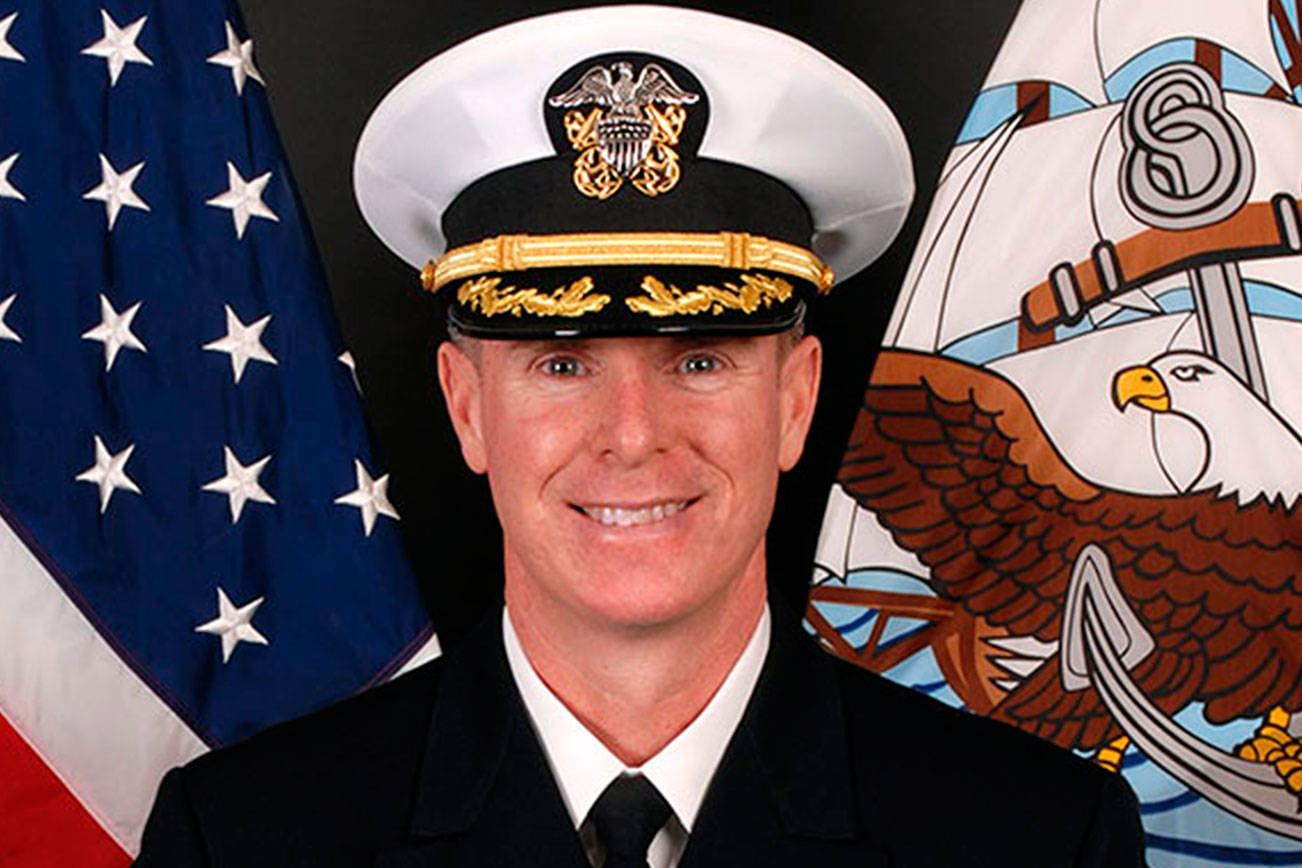The intent of this ‘Sound Off’ is to discuss the Navy’s Air Installations Compatible Use Zones (AICUZ) program which would identify Accident Potential Zones (APZ) if required. We have often heard questions on this subject from the local community and elected officials alike during our EA-18G Growler home basing Environmental Impact Study.
First, our current EIS is evaluating whether our proposed level of operations is compatible with current land use and ensures that we have a complete understanding of community impacts before we make a decision on the distribution of operations between Ault Field and OLF Coupeville. In this process, we have received the concerns of the public and are committed to compatible use. There is no intent to force the closure or relocation of vital government, community, medical and school institutions. We are cognizant of the economic and cultural drivers in the Puget Sound area and Island County, and we will ensure these are considered in our final Record of Decision.
After the Record of Decision, our intent is to conduct an AICUZ study that will provide guidance for future land use decisions. The AICUZ program was established by the Department of Defense in 1973 to protect the mission of the air installations and the well-being of the surrounding communities. The intent of the program is to bring the Navy and the community together to plan effectively for land use compatibility of remaining undeveloped areas surrounding air installations.
The Navy released its first AICUZ study for NAS Whidbey Island in 1977, with an update in 1987, then released another in 2005. The goal of the AICUZ program at NAS Whidbey Island has always been to preserve the good relationship which now exists between our air station and our community, while maintaining the capability and proficiency of our squadrons. I believe we have been successful in this goal, and we will continue our effort to strengthen those relationships.
The identification of Accident Potential Zones (APZ) in an AICUZ study helps further define land use recommendations to give to local communities for consideration in the long range planning management of their future growth development in coordination with the Navy. APZs are areas where an aircraft mishap is most likely to occur if one should occur, but do not reflect the probability of an accident. For an area to be deemed an APZ, a minimum of 5,000 flight operations have to occur annually. Previous AICUZ studies for NAS Whidbey Island have defined APZs around both Ault Field and OLF Coupeville. It is up to local communities to decide how best to incorporate those recommendations into their zoning and future planning, and to reiterate, does not require current existing structures to be moved or abandoned. The Navy does not require local communities to establish APZs and to establish specific land use controls. The Navy makes recommendations for consistent land use based on operations to local communities.
The Navy has been working with local communities here for decades to promote growth and development in a way that is consistent with Navy flight operations. One example is our commitment and investment of millions of dollars on easements through the Readiness and Environmental Protection Integration (REPI) program, working in partnership with Island County and various groups like the Nature Conservatory and Whidbey Camano Land Trust. This mutually beneficial program supports Navy operations and conservation in and around Ebey’s Landing National Historic Reserve and Ault Field while also maintaining the rural character of the area.
An excellent example is the case study between NAS Oceana with the City of Virginia Beach.
In 2005, the City of Virginia Beach incorporated Navy AICUZ compatibility criteria for noise zones and APZs into the city’s zoning ordinance, and it has continually been applied for properties near NAS Oceana. Compatibility criteria are only applied to new development applications, with existing uses remaining unaffected. Additionally, the City of Virginia Beach, with funding support from the state of Virginia, undertook a highly-successful voluntary APZ Acquisition and Conformity Program. They did not have the authority to exercise eminent domain to meet the requirements of the Navy’s AICUZ program. The city also established a prominent and award-winning economic development program to attract compatible business activities to properties located in the APZs. This collaboration between the City of Virginia Beach and the Navy protected local citizens from incompatible development, supported economic development, and ensured the Navy could conduct its essential training. Virginia Beach continues to have a booming tourist industry, aided by the ongoing collaboration and partnership between the City and the Navy on many topics and projects. Furthermore, the Navy has replicated this process with the City of Chesapeake, home to Naval Auxiliary Field Fentress where over 85,000 operations (mostly Field Carrier Landing Practice) take place annually.
The Navy is committed to working with our local governments and elected officials to do what is best for our community and our collective heritage while ensuring our Sailors who have signed up to serve their country receive the training they need. We are committed to providing the safest flying environment and airfields for our community and our aircrews. And finally, we are committed to listening and answering the concerns of our neighbors.For those who want more information on the Navy’s AICUZ and APZ program, please contact our Public Affairs Officer at 360-257-2286, or by email at Michael.Welding@navy.mil
Capt. Geoff Moore
Commanding Officer
Naval Air Station Whidbey Island



